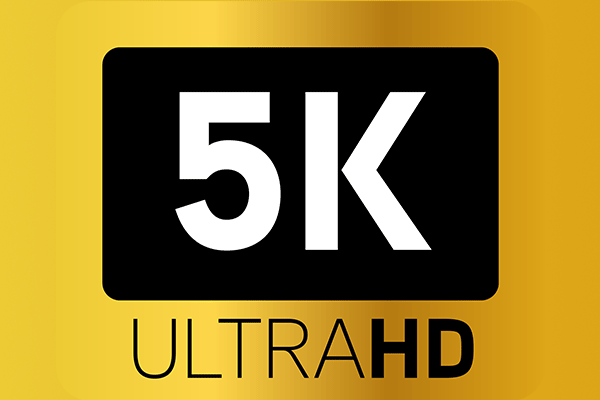With each passing year, display technology continues to evolve, pushing the boundaries of visual quality and immersion. One such innovation that has gained attention is 16K resolution, promising an unprecedented level of detail and realism. In this article offered by MiniTool movie-creating application, we will delve into the world of 16K resolution, exploring its meaning, applications, and the future of visual display technology.
What Does 16K Mean?
Resolution refers to the number of pixels that make up an image on a display. The higher the resolution, the more pixels are present, resulting in a sharper and more detailed image. In the case of 16K resolution, it signifies a display with a horizontal resolution of approximately 16,000 pixels.
16K resolution is a significant leap forward from previous standards such as 4K and 8K, offering an incredibly immersive visual experience. With four times the pixel density of an 8K display and an astounding 16 times that of a 4K display, 16K resolution holds the potential to showcase minute details and lifelike visuals like never before.
Applications of 16K Resolution
The following are some popular applying cases of 16K resolution.
# Professional Video Production
16K resolution holds immense value in fields such as cinematography, animation, and visual effects. It enables content creators to capture and present their work with unparalleled clarity and precision. High-resolution displays allow for meticulous editing, color grading, and post-production processes, ensuring the fidelity of the final output.
# Scientific and Medical Imaging
In scientific research, medical imaging, and microscopy, 16K resolution has the potential to enhance observation and analysis. It enables researchers and medical professionals to visualize intricate details, aiding in accurate diagnoses, in-depth analysis of data, and facilitating groundbreaking discoveries.
# Architectural Visualization
Architects and designers can benefit from 16K resolution displays to present their creations with exceptional realism. The high pixel density allows for precise rendering of textures, materials, and lighting, offering clients a lifelike representation of their projects.
# Virtual Reality (VR)
16K resolution has the potential to revolutionize VR experiences, providing users with an unprecedented level of immersion and realism. Combined with advancements in VR headsets and graphics processing capabilities, 16K resolution can transport users into virtual worlds with astonishing clarity and detail.
Future Challenges and Considerations
While 16K resolution promises incredible visual fidelity, it also presents significant challenges.
# Display Technology
Manufacturing displays with such high pixel densities pose engineering and cost challenges. Creating screens that can support 16K resolution while maintaining color accuracy, contrast, and refresh rates will require advancements in panel technology.
# Content Availability
As with any new resolution standard, the availability of native 16K content will be limited initially. However, as technology progresses, content creators will adapt, and the industry will catch up to provide a wider range of 16K-compatible content.
# System Requirements
Running applications and media in 16K resolution demands substantial computational power. Graphics cards, processors, and storage devices must keep pace with these requirements to ensure smooth performance and playback.
Conclusion
16K resolution represents a leap forward in visual display technology, promising unparalleled levels of detail and realism. While it is currently at the cutting edge of innovation, challenges surrounding display technology, content availability, and system requirements must be addressed for widespread adoption.
As technology continues to evolve, the possibilities of 16K resolution in professional video production, scientific imaging, architectural visualization, and virtual reality are immense. While it may take time for 16K displays to become commonplace, they offer a glimpse into the future of visual experiences, where the boundaries between reality and digital content blur like never before.
16K Resolution FAQ
Related Articles
- Netflix 4K: Unleashing the Power of Ultra-High-Definition Streaming
- HBO Max and the 4K Experience: What You Need to Know
- Unlocking the Brilliance of Prime Video in 4K: A Cinematic Experience at Your Fingertips
- Disney+ 4K: A Magical Visual Feast for Streaming Enthusiasts
- Paramount+ 4K: Elevating Entertainment to Unprecedented Heights





User Comments :